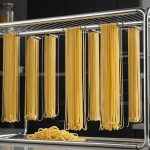Cookware is an essential part of any kitchen. The types of pots and pans we use can make a significant impact on the quality of our food, as well as our overall cooking experience. While there are plenty of options to choose from, including stainless steel and iron, ceramic cookware stands out for many reasons. In this article, we’ll delve into the advantages of ceramic cookware, particularly in comparison to its most common alternative: non-stick cookware.
The Advantages of Ceramic Cookware
Ceramic cookware offers many benefits that make it a favorite among home cooks and professional chefs alike. Here, we’ll explore what makes ceramic cookware a superior choice.
Also read : How to Maintain a Granite Countertop for Lifetime Use?
Even Heat Distribution
One of the most notable advantages of ceramic cookware is its ability to distribute heat evenly. Unlike other types of pans, like steel or iron, ceramic pans can distribute and hold heat consistently across their surface. This means that your food cooks uniformly, without any hot or cold spots that could lead to uneven cooking.
Non-Toxic Coating
Ceramic cookware is often praised for its healthy, non-toxic coating. While nonstick pans typically have a synthetic coating that contains potentially harmful chemicals, ceramic pans use a natural, mineral-based coating that’s free from harmful substances such as PTFE and PFOA. This ensures that no toxic fumes are released during cooking, making ceramic cookware a safer choice for both you and the environment.
Additional reading : What Features to Look For in a High-Quality Yogurt Maker?
Easy to Clean
Another benefit of ceramic cookware is its ease of cleaning. The smooth surface of ceramic pots and pans allows food to slide off easily, reducing the need for heavy scrubbing. Plus, most ceramic cookware is dishwasher-safe, saving you time and effort on cleaning.
Comparing Ceramic and Nonstick Cookware
While ceramic and nonstick pans may seem similar at first glance, there are several key differences that set them apart. Here, we’ll compare the two types of cookware based on their performance and safety.
Performance
In terms of performance, ceramic and nonstick cookware have their own strengths. Nonstick pans are known for their ability to release food easily, which is particularly useful when cooking delicate foods like eggs or fish. However, ceramic pans outshine nonstick pans when it comes to heat distribution and retention. Ceramic pans can reach higher temperatures without warping or damaging the coating, making them more suitable for searing and browning food.
Safety
Safety is another important factor to consider when choosing cookware. Nonstick pans often contain chemicals like PTFE (Teflon) and PFOA, which can release toxic fumes when overheated. These fumes can cause flu-like symptoms in humans and can be lethal to birds. On the other hand, ceramic cookware uses a natural, mineral-based coating that’s free from these harmful substances, making it a safer choice for cooking.
How to Choose and Shop for Ceramic Cookware
Now that you’re familiar with the benefits of ceramic cookware, let’s discuss how to choose the best set for your kitchen.
Consider the Set Composition
When shopping for ceramic cookware, first consider the composition of the set. Most sets include a variety of pots and pans in different sizes, so think about what types of dishes you usually cook and choose a set that meets your needs.
Look at the Coating
The quality of the ceramic coating is crucial. It should be smooth and free from any cracks or chips. Also, the coating should be free from PTFE and PFOA, as these chemicals can be harmful when heated.
Check the Handle and Lid
The handle and lid of the cookware are also important. The handle should be sturdy and comfortable to hold, while the lid should fit securely. Both parts should be able to withstand high temperatures without becoming too hot to touch.
Assess the Price and Brand
Finally, consider the price and brand of the cookware. While ceramic cookware is generally more expensive than nonstick, it’s worth investing in a high-quality set from a reputable brand. This way, you can be sure that you’re getting a durable, long-lasting product that’s safe to use.
In conclusion, ceramic cookware offers numerous benefits over non-stick alternatives, including better heat distribution, a safer, non-toxic coating and an easier cleaning process. It’s a worthwhile investment for any home or professional kitchen. Happy cooking!
The Pros and Cons of Ceramic Cookware
Like any other product, ceramic cookware has its share of strengths and weaknesses. Below, we’ve detailed the key pros and cons to help you make an informed decision.
Pros of Ceramic Cookware
Ceramic cookware stands out for its excellent heat distribution and retention capacity, which allows for uniform cooking. Food cooked in ceramic pots and pans receives heat evenly from all sides, reducing the occurrence of undercooked or overcooked dishes.
Ceramic cookware also boasts an eco-friendly, non-toxic coating that sets it apart from other types of cookware. Unlike nonstick cookware, which often contains harmful PTFE and PFOA chemicals, ceramic cookware uses a natural, mineral-based coating that’s much safer for both you and the environment.
Additionally, cleaning ceramic pots and pans is a breeze. Their smooth surfaces prevent food from sticking, which makes scrubbing a thing of the past. Plus, most ceramic cookware is dishwasher safe, saving you time and effort.
Cons of Ceramic Cookware
Despite the numerous benefits, there are a few drawbacks to ceramic cookware. For one, ceramic coated cookware can be prone to chipping or cracking if mishandled, which can reduce its lifespan.
Ceramic cookware also doesn’t conduct heat as well as materials like cast iron or stainless steel. This means that it may take longer to heat up, which could increase your cooking time.
Lastly, high-quality ceramic cookware often comes with a higher price tag compared to nonstick or steel cookware. While the benefits often justify the cost, the initial investment can be a barrier for some.
Ceramic Cookware: A Worthy Investment
The choice of cookware can greatly influence your cooking experience. From the even heat distribution, non-toxic coating to the easy cleaning process, ceramic cookware offers significant benefits that make it stand out from the crowd.
Despite a few drawbacks, like potential chipping and a higher price tag, ceramic cookware proves to be a worthwhile investment. Not only does it enhance the cooking process, but it also offers peace of mind, knowing that you’re using a product that’s safe for you and the environment.
When shopping for ceramic cookware, pay close attention to the set composition, the quality of the ceramic coating, and the handle and lid construction. While the price may be higher than that of nonstick or steel cookware, investing in a high-quality ceramic cookware set from a reputable brand guarantees a durable, long-lasting product that will serve you well in the kitchen.
In conclusion, ceramic cookware, with its myriad benefits and few downsides, is a superior alternative to non-stick cookware. Whether you are a home cook or a professional chef, making the switch to ceramic cookware can elevate your culinary creations while ensuring a safer, more eco-friendly cooking experience. With careful selection and proper care, your ceramic pots and pans will be an invaluable addition to your culinary arsenal. Happy cooking!











